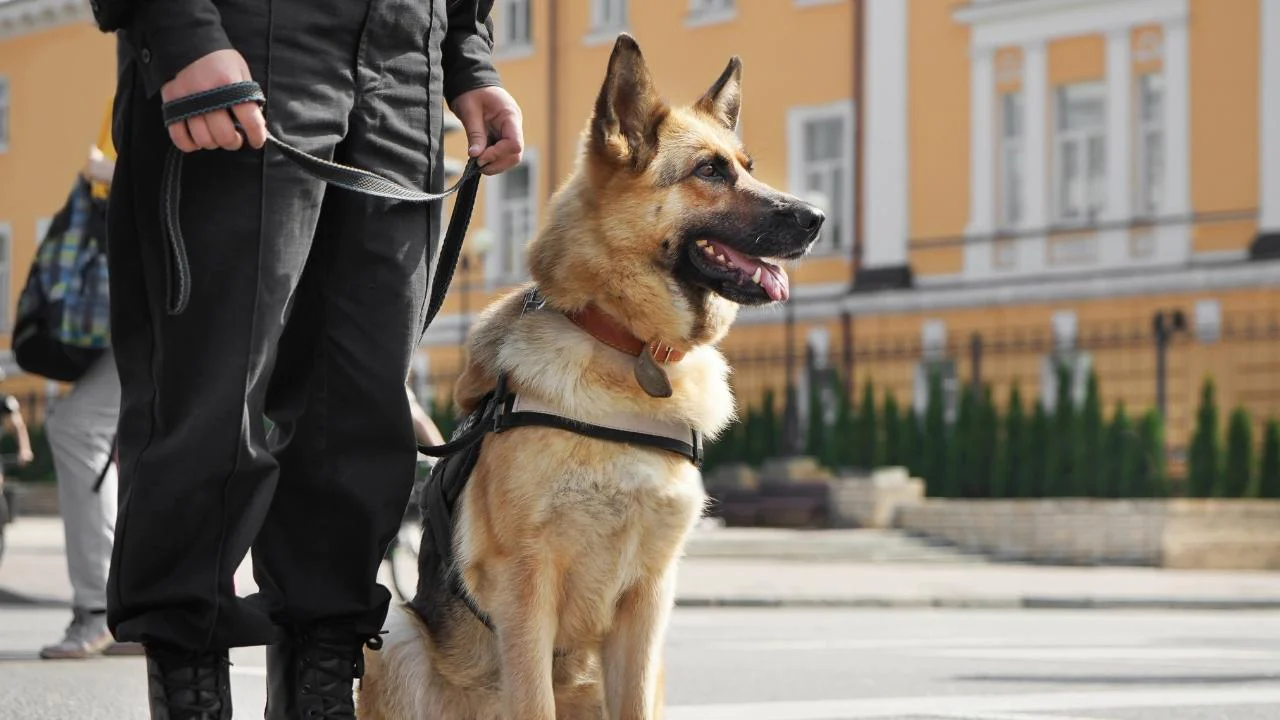Law enforcement agencies around the world rely on highly trained and skilled animals to assist them in their daily operations. One such animal that has proven to be an invaluable asset is the Police Alsatian Dog, also known as the German Shepherd. These intelligent and versatile canines are specifically bred and trained to perform a wide range of tasks, making them an indispensable part of police forces worldwide. In this article, we will delve into the various roles and responsibilities of Police Alsatian Dogs, their extensive training process, and the remarkable skills they possess.
Section 1: Origins and Characteristics
The Police Alsatian Dog, originally bred in Germany in the late 19th century, was specifically developed for herding and guarding livestock. Over time, their exceptional intelligence, loyalty, and physical attributes made them an ideal choice for law enforcement agencies. These dogs typically have a strong, muscular build, with a height ranging from 22 to 26 inches at the shoulder and weighing between 60 to 90 pounds. Their distinctive appearance includes a thick double coat, erect ears, and an alert expression.
Section 2: Roles and Responsibilities
Police Alsatian Dogs are trained to perform a multitude of tasks that aid law enforcement officers in maintaining public safety. One of their primary roles is tracking and apprehending suspects. With their exceptional sense of smell, these dogs can follow a scent trail for miles, even if it is several hours old. This ability makes them invaluable in locating missing persons or fleeing criminals.
Another crucial responsibility of Police Alsatian Dogs is their role in narcotics detection. These highly trained canines are capable of detecting various illegal substances such as cocaine, heroin, and marijuana. Their keen sense of smell allows them to locate hidden drugs in vehicles, buildings, or even large open areas. This skill helps law enforcement agencies in combating drug trafficking and keeping communities safe.
Additionally, Police Alsatian Dogs are trained in apprehension and protection work. These dogs undergo rigorous training to develop their bite strength and control, allowing them to apprehend suspects without causing excessive harm. Their presence alone often acts as a deterrent, preventing potential criminals from engaging in unlawful activities.
Section 3: Training Process
The training process for Police Alsatian Dogs is extensive and requires a significant investment of time and resources. The dogs undergo basic obedience training at a young age, which includes commands such as sit, stay, and heel. As they progress, they are introduced to more advanced training techniques specific to their roles.
Tracking training is a crucial aspect of their development. Dogs are taught to follow scent trails, discriminate between different scents, and indicate when they have found the target scent. This training is conducted in various environments to ensure the dogs can track effectively in different conditions.
Narcotics detection training involves imprinting the dogs with the scent of various drugs. They are then taught to locate and indicate the presence of these substances. This training is often conducted using a reward-based system, where the dog is rewarded with a toy or treat when they successfully locate the target scent.
Protection training focuses on developing the dog’s bite work and control. Dogs are trained to apprehend suspects on command and release them when instructed. This training is conducted under strict supervision to ensure the safety of both the dog and the handler.
Section 4: The Human-Canine Bond
The relationship between a Police Alsatian Dog and its handler is built on trust, respect, and mutual understanding. Handlers spend countless hours with their dogs, forming a strong bond that is crucial for effective teamwork. These dogs often live with their handlers, further strengthening their connection.
The handler is responsible for the care, training, and well-being of the dog. They provide the necessary exercise, grooming, and medical attention to ensure the dog remains in optimal condition. The handler also plays a vital role in maintaining the dog’s training by conducting regular training sessions and reinforcing commands.
Conclusion:
The Police Alsatian Dog is an exceptional breed that has proven to be an invaluable asset in law enforcement. Their intelligence, loyalty, and versatility make them well-suited for a wide range of tasks, including tracking suspects, detecting narcotics, and apprehending criminals. Through rigorous training and the development of a strong bond with their handlers, these remarkable canines continue to play a vital role in maintaining public safety.








